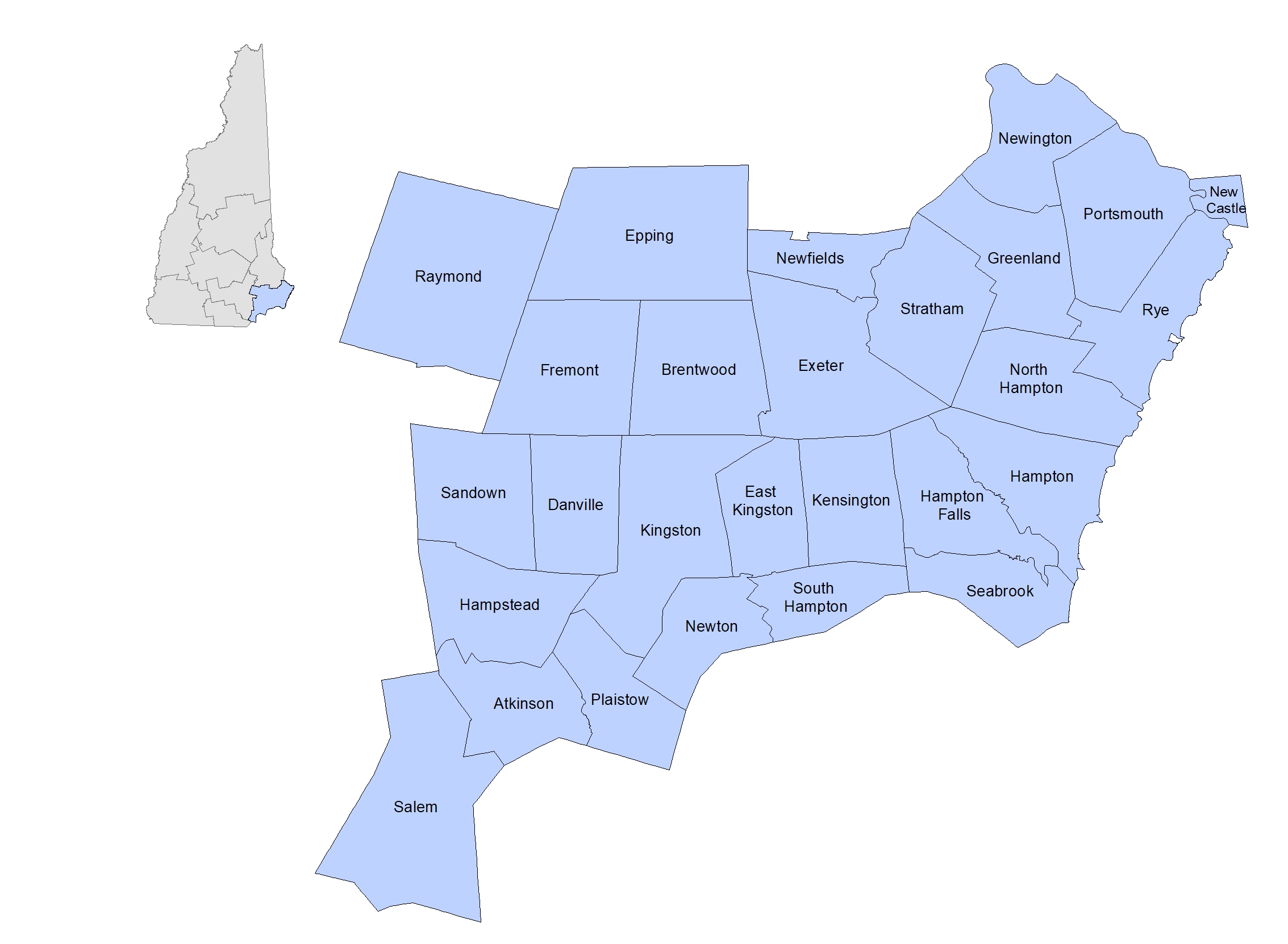Introduction and Vision
The RPC’s purpose is threefold: to assist communities with their individual planning needs, to develop regional plans to guide and coordinate development in the region, and to help communities work together to address common problems. The 2015 RPC Regional Master Plan is the expression of this second purpose. It has been prepared in accordance with RSA 36:47, the state statute which governs the development and adoption of such plans. The Plan is an advisory document with no mandate or regulatory effect. Its purpose is to provide useful and timely information, analysis and guidance to communities in the RPC region that they may use to help develop or update their individual master plans. It is also intended to ensure that those communities are aware of various issues and conditions in the broader region that may affect their future development, and to facilitate the coordination of planning and development in the region.
The Regional Master Plan is organized in a similar manner as many local master plans and is designed to be consistent with the framework provided in RSA 36:47 and RSA 9-A. It specifically describes the planning region, summarizes the current issues and challenges that are of concern, and establishes an overall vision and set of goals for the Plan.
Regional Master Plan Introduction and Vision sections.
Regional Vision for 2040
The vision for the Rockingham Planning Commission region in 2040 is the following:
The southeastern New Hampshire region enjoys a high quality of life represented by a strong regional economy, distinct community character, and outstanding natural and recreational resources. This has been achieved through careful planning, wise stewardship of natural resources, infrastructure investment, and increasing regional cooperation on shared issues. This vision is supported when:
- Communities are working together to ensure that long-term economic, social and environmental factors are balanced in the planning and decision-making process.
- Development and redevelopment are enhancing and strengthening community centers, preserving rural character, and maintaining traditional landscapes. This provides open space for agriculture, recreation and wildlife areas, and protection of natural resources, while providing residents with a variety of choices for places to live, work, and play.
- Communities are allowing a variety of housing choices for residents of all income levels to strengthen our communities and economic vitality.
- We are investing in the infrastructure systems that support our communities and businesses.
- The region is promoting economic opportunities that result in more high quality jobs, stable property tax rates, enhanced educational opportunities, and improved services for residents and businesses.
- We are striving to protect our natural environment so residents can benefit from its resources without diminishing its quality for other living creatures and future generations.
- Our sense of community is being preserved by protecting and actively using the region’s historical resources and cultural heritage.
- Communities are acknowledging and planning for the effects of a changing climate. Anticipated changes include sea-level rise, increasing flood events, more erosion, periods of drought and other natural hazards.
- Residents, businesses, and communities are adapting to the high cost of energy by implementing efficiency measures for building, increasing public transportation options, and developing local renewable energy resources.
- Communities are respectful of property rights in their efforts to manage growth and development.
Regional Goal
Promote efficient use of land, resources and infrastructure in southeastern New Hampshire that:
- Creates a high quality built environment while protecting important natural and cultural resources.
- Promotes positive effects of development and minimizes adverse impacts.
- Promotes economic opportunities and community vitality.
- Enhances the coordination of planning between land use, transportation, housing and natural resources.
- Considers and incorporates climate change into local and regional planning efforts.


